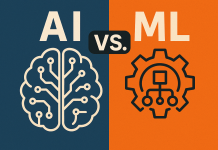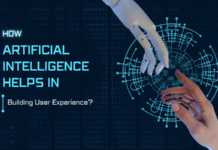69% of businesses rely on AI to identify cyber threats and prevent cyber-attacks. This figure is a reflection of the different uses AI offers.
Artificial intelligence (AI) technology simulates human behavior. It aims to make human-like computer systems that can solve complex cybersecurity issues.
Such issues include tackling cyber threats like malware and ransomware. They also prevent cyberattacks like phishing to secure endpoints. With AI, these security processes are automated.
Automation is possible when the machine learns past behaviors and analyzes data. AI can analyze large volumes of datasets, making it an essential technology for information security.
AI technologies are efficient compared to traditional methods that rely on hardware characteristics to secure endpoints.
That is why more companies continue to embrace AI in cybersecurity. For this reason, experts predict the spending on AI cybersecurity systems will reach $30.9 billion in 2025. Here are the top 11 uses of AI in the cybersecurity space.
Infographic created by Donnelley Financial Solutions, a data room provider
1. AI Sends Accurate Security Alerts
Websites are always at risk of cyberattacks. AI makes it possible to identify such attacks. It provides better predictability of security issues and sends focused security alerts.
Combining AI and a proxy server, you reinforce your security online and avoid such risks. A proxy server is a computer that sits between you and the internet. It performs many functions, including protecting you from cyberattacks.
Residential ip proxy ensures your identity is anonymous online. They get fewer bans and are easier to maintain.
Proxies use a mechanism known as masking to protect you from cyber threats and risks like identity theft. This makes it possible to access websites in different locations.
Masking is a process that involves assigning a new IP address to your computer. You can also use proxies to test applications. Proxies are also web filters that keep you safe online.
2. Early Cyber Threat Detection
The number of malicious activities in cyberspace keeps rising each week. Artificial intelligence can help detect such activities using sophisticated algorithms.
Detecting cybersecurity issues can allow technicians to take necessary preventive measures to stop the attack. Early detection and prevention of threats ensure business continuity. It is the best way to avoid attacks that can cause downtime and losses.
3. Categorize Threats
AI security systems not only identify threats but also categorize them. They can determine the significance of a particular threat.
For example, they can identify threats that cause a real risk to your system and those unlikely to cause any risk. Categorizing threats helps the cybersecurity team to know areas that require immediate action and focus.
This enables security technicians to save time and resources when responding to threats. They will not waste time on what does not pose a risk to your network.
4. Endpoint Security Control

Cybercriminals are using endpoints to access company systems. AI can identify suspicious behavior on these endpoints and flag them. This is possible using machine learning capabilities.
AI and machine learning use previous behavior patterns, login time, and user location to determine the safety of your systems.
Endpoint security control is essential because most successful cyberattacks against companies happen at user endpoints.
5. Monitoring Emails
Emails are one of the most vulnerable entries for cyber attacks as they are the main method of communication in companies. Artificial intelligence helps to monitor company emails to ensure they are safe. Most attackers use employee emails to perform malicious activities like phishing.
Attackers can also send dangerous links containing malware through email. AI-based software automatically scans company emails and detects risks. Such threats can be removed before they get into the company system.
6. AI-Based Antivirus
Antiviruses scan files in a computer network and ensure systems are protected against viruses. AI-based antivirus automates this process.
Such automated security systems use sophisticated algorithms to perform defensive activities without human intervention. For example, AI-based antivirus software like Avast and Cylance Smart-antivirus provide better system protection.
7. Behavior Modeling
AI-based security systems can model user behavior. Behavior modeling enables the system to identify a user’s behavior in the system. These behaviors include user login patterns.
This means the system understands the behavior of each user. If there is unusual behavior in the network, the AI-based security system alerts the security technicians.
Behavior modeling helps to protect login credentials. This is because cyber attackers mostly use passwords to access company systems illegally.
8. AI Improves Security Analysis
Security teams can analyze networks and detect vulnerabilities with the use of AI. It is possible to detect a breach after an AI-based system has performed an accurate inventory.
This involves identifying and recording all IT applications, devices, and users. This enables the system to identify the most vulnerable spots in a network.
The IT security team can use information from AI to channel resources to the most vulnerable areas. Such AI analysis makes it possible to improve controls and strengthen cybersecurity.
9. Identifying Automated Threats
Attackers use automation to perform harmful activities like taking over accounts or stealing credentials. They can also access your website’s database.
You need an automated solution to tackle such automated threats. For example, AI can help you identify abnormal patterns in your shopping cart.
10. Eliminate Repetitive Tasks
Automation helps to eliminate repetitive cybersecurity tasks. It allows you to identify breaches and take security measures fast. You can prioritize tasks and provide smart solutions in a cost-effective way.
Some automation areas include data management, incident response, and attack simulation. AI automates these activities, enabling the security team to focus on other areas of their work.
11. Fast Response Time
Responding fast to a threat or incident is an important part of cybersecurity. AI security systems respond fast and minimize breach impact.
This makes it possible for the IT security team to resolve security issues with speed and less effort. Such fast solutions reduce losses and ensure business continuity.
Companies prefer AI-based cybersecurity systems because they can work well with remote company systems. Geographical distance is not a problem with AI-based systems. Such systems are proactive and can handle major challenges before they happen.
Key Takeaway
AI is a technology that is necessary for enhancing cybersecurity and IT performance. Manual security activities are not sufficient to avoid a cyber attack.
This is because cybercriminals are using sophisticated technology to attack systems. It is important to use AI to identify such attacks and threats fast. This prevents them from accessing the systems.
Cybersecurity professionals also prefer automated solutions because they are fast and save time. They also help to minimize the impact of a security incident.








